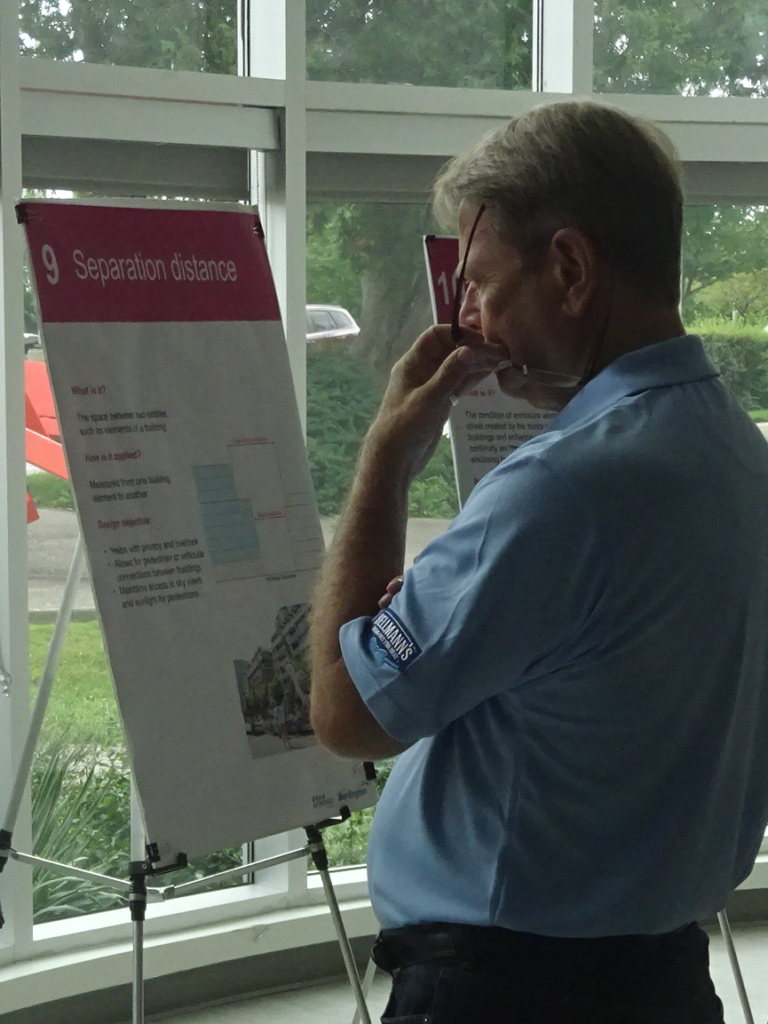 By Marty Staz
By Marty Staz
October 20th, 2018
BURLINGTON, ON
Really, How Do We Want To Grow
Being involved in a municipal election campaign for the first time has certainly been an eye opener. What started out as a bucket full of presentable ideas has now morphed into a collection of defined plans, processes and objectives. The more you talk with people, the more you research and the more you think.
This eventually provides you with something that you truly believe is the right plan.

An election campaign was an eye opener for Marty Staz.
Without a doubt, the most talked about and the most focused topic in our city is intensification, or as I often refer to it over-intensification. So to begin, let’s look at a definition of intensification. From the website Neptis.org intensification is defined as any new residential development within the existing built-up urban fabric. By this definition, intensification may occur on undeveloped or on previously developed land; what makes it “intensification” is its location within the area defined as already urbanized. This definition is the one used by the Ontario government. So, keeping this definition in mind, let’s explore what is really going on in Burlington.
In Ontario, The Growth Plan for the Greater Golden Horseshoe (2006) has policies designed to contain the urban footprint of one of the fastest-growing metropolitan regions in the developed world. Research has shown that if the Toronto region, which includes Burlington, continues to grow as it has in recent decades, its residents will experience a decrease in their quality of life. This last sentence is where I think we have to push the pause button and determine how we want Burlington to grow.
After looking at the various development projects on our city’s website, either proposed or underway in our city, I determined that there are 28 projects with a proposed height of 8 stories or more stretching to 25 stories. Eight of those projects are proposed for Ward 1. Also, let’s keep in mind that this number is what is current. With the recent approval of 23 stories across from City Hall I can only imagine what future proposals will look like. So this brings me back to the question of how we want to see our city grow. When going door to door and listening to what people have to say I would suggest that the answer is a resounding no – but growth is inevitable. I know we have growth targets in place as mandated by our provincial government but that’s an argument for another time. In my opinion achieving those targets is a non-issue.
So how do we want to grow?
 There is a very interesting concept referred to as “The Missing Middle”. The illustration below gives us a good visual interpretation of what the missing middle means and if you want a good real-life example of this just look to Mississauga. This city started out as a bedroom community for Toronto full of single family homes. When growth started to occur their local politicians decided that the solution was to grow up, so now it’s either single family detached or high rises that stretch forever.
There is a very interesting concept referred to as “The Missing Middle”. The illustration below gives us a good visual interpretation of what the missing middle means and if you want a good real-life example of this just look to Mississauga. This city started out as a bedroom community for Toronto full of single family homes. When growth started to occur their local politicians decided that the solution was to grow up, so now it’s either single family detached or high rises that stretch forever.
To be perfectly clear, any design that reflects the Missing Middle still must adhere to specific density requirements and accommodate the proper parking, green space, parkland, etc. Just look at the proposed townhouse development at 2100 Brant Street as an example where these standards have been ignored.
“Well-designed ‘Missing Middle’ buildings unify the walkable streetscape as they greatly diversify the choices available for households of different age, size, and income. Smaller households tend to eat out helping our neighbourhood attract wonderful restaurants. Diverse households keep diverse hours meaning we have more people out walking our streets at more varied hours—keeping them safer.” — Ellen Dunham-Jones, professor at the Georgia Institute of Technology and co-author of Retrofitting Suburbia: Urban Design Solutions for Redesigning Suburbs
So this is a call for architects, planners, and developers to think outside the box and to begin to create immediate, viable solutions to address the mismatch between the housing stock and what the market is demanding—vibrant, diverse, sustainable, walkable urban places. Missing Middle housing types are an important part of this solution.
The City of Burlington is at a crossroads and I honestly think that this could be a solution to growing our city, meeting our provincial mandates and creating a great place to live.
.
 Marty Staz is a candidate for the ward 1 city council seat and is a former president of the Burlington Chamber of Commerce.
Marty Staz is a candidate for the ward 1 city council seat and is a former president of the Burlington Chamber of Commerce.


















Etts, there are two 11 story buildings planned for the Solid Gold sight, two 9 story buildings planned for the Bingo site and 4 buildings over 11 stories planned for Georgian Court.
Marty, hasn’t Plains Rd. been planned to be exactly the “middle housing” you say is needed?
Middle housing is not the 8 stories or 11 stories, or even 6 stories that are being proposed and talked about with city for Ward 1.
Marty’s diagram has 3 to 4 stories in the part called missing middle. It’s just denser, not greatly higher.
Cravens newsletter cited 14 to 16 projects in various stages from proposed to under review to approved. This was what he saw and acknowledged as coming. There are also a number of land assemblies that are just in waiting.
The former Breeze was approved at 8, but technically 9 stories, when 6 was permitted. The site is now for sale for $6 million for 72 units approved. You can do the math.
The 8 projects mentioned by Marty could include things only talked about with city planning, and the 8 stories seems to be the most recent ask. Some are in the pipe already.
Marty, please tell me exactly where the 8 projects of 8 stories or more that you mention above are going to be in Ward 1. Thanks.
Unfortunately a portion of the article was omitted by the Gazette. You can read it in its entirety here http://www.stazforward1.com/news
Editor’s note: A short portion got clipped somewhere along the way of the production process. we found the missing words – there weren’t very many of them – and added them to the article.
The concept of intermediate sized buildings around the mobility hubs has already been addressed and approved by the Official Plan for growth in Burlington which was passed in 2016. This Official Plan protects and restricts growth to specific areas around the GO stations. You should read it and become familiar with what has already been in place for Burlington for the next 50 years.
Re: “Smaller households tend to eat out”…. what is your point?
IMO, the full sentence seems to explain the point: “Smaller households tend to eat out helping our neighbourhood attract wonderful restaurants.”
A well designed Missing Middle provides walkable streetscapes and it’s nice to have amenities to walk to that make the neighbourhood vibrant like restaurants, cafes, pubs, etc.